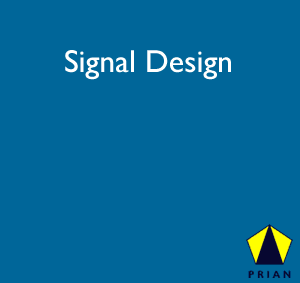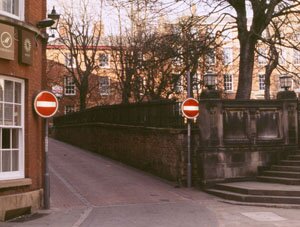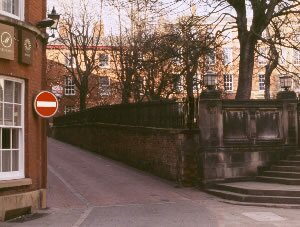7.1 Traffic measurements & surveys
Vehicles are usually measured in traffic terms as passenger car units (PCUs). A car is one PCU, a bus is 2 or 3 PCUs. 10 cycles equals 1 PCU. These measurements are used in traffic flow and signal calculations. That is X PCUs per minute or hour. Traffic volumes vary widely between busy times in the morning and evening “peak” times, and during the night. They also vary between days of the week and seasons of the year. Poor weather and darkness also affect traffic flow. Therefore data on traffic volumes needs to state clearly if it relates to average or maximum flows and the time scale.
BACK TO TOP
7.2 Capacity & safety:
Junction design with PICARDY
Junctions are where vehicles turn and across the path of other vehicles and pedestrians want to cross the road. These conflicts are dangerous and cause accidents. If speed and volumes are sufficiently low, drivers and pedestrians have time and space to avoid collisions. But in many cases speeds and volumes are high. At a typical “T” junctions, vehicles entering from the side onto a busy road have to wait for gaps in the traffic. Computer programs such as PICADY help calculate how to allow drivers to turn right, for example, safely and at what stage a roundabout or traffic signals would be needed.
BACK TO TOP
7.3 Roundabouts: ARCADY
Full sized roundabouts are designed to cope with large volumes of traffic making complicated turns. However they take up more room that traffic signals and are difficult for pedestrian to cross. New designs for “compact” roundabouts take up less space and require drivers to enter the roundabout more slowly. This should reduce accidents and make it easier for pedestrians and cyclists.
BACK TO TOP
7.4 Mini & informal roundabouts
Intended for relatively low speed areas, mini-roundabouts have a prescribed set of road markings and signs, as well as rules about not passing over the central roundel. A recent innovation, an informal roundabout, has no formal signs and lines, merely a change of road surface texture. Drivers appear to cope well and there are considerable visual advantages. Street clutter is reduced to a minimum.
BACK TO TOP
7.5 Signals

In their simplest form, traffic signals stop vehicles in a lane of traffic so that those from other lanes can cross or turn safely in front of them. They also allow pedestrians to cross safely. The signals are organised to allow vehicles to move forward in a series of “stages” so that each lane has its turn. The signal timings are calculated to within seconds so that road space is used efficiently. This sometimes means that pedestrians are required to make considerable detours from their preferred route and be delayed in central refuges. Unfortunately the comfort and convenience of pedestrians is not assumed to be a high priority in signal computer programs.
BACK TO TOP
7.6 Traffic signs: Reducing street clutter
There are three purposes for traffic signs: to instruct, warn and inform. Signs to instruct (regulatory signs) are mostly to enforce a traffic regulation order. They are usually essential for the safe movement of traffic. Warning and information signs are less essential and they can often be removed or relocated. But even regulatory signs can be reduced to a minimum and the Traffic Signs Regulations and General Directions, which describes and illustrates them, spells out ways this can be done.
No entry sign (sign 616) need only be put at one side of the road where the sign is at a junction and the road is less than 5.0 metres wide. At roundabouts, turn left signs (sign 606) is not a legal requirement. The chevrons (sign 515) can also be omitted. The test to apply is to consider if there is likely to be any doubt that a driver is approaching a roundabout. Car parking signs (sign 661 series) need not be fixed to an individual post. They can lawfully be fixed to railing or walls at the back of the pavement. Pedestrian zone signs (sign 637 series) may also be fixed to walls, etc. at the back of the pavement.
No entry signs

A single no entry sign is equally effective

BACK TO TOP

